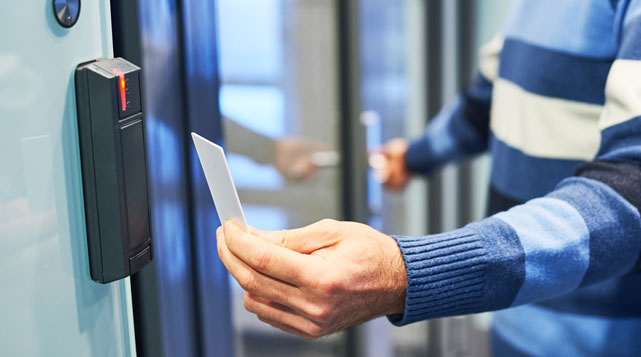Access control is a vital component for safety in the workplace, however, it can be hard to achieve in an open environment designed to be inviting and easily accessible to employees and customers. Violations of access control can take the forms of tailgating and piggybacking.
Tailgating occurs when an unauthorized person slips in through a door before it closes. Piggybacking occurs when an authorized person allows someone to follow them through a door to a secure area. Both practices are breaches of security which have the potential to expose a workplace to a variety of threats.
The Risks of Tailgating & Piggybacking
- Theft. Allowing unauthorized individuals into secured areas can result in tangible losses to include:
- Office equipment
- Intellectual property
- Sensitive hardware
- Employee personal items such as phones, wallets, purses and other valuable items
- Unhealthy Company Culture. Even if the “piggybacker” is an employee with appropriate clearance, the failure to respect the rules contributes to an overall attitude that security is not important, further increasing the likelihood of a future security breach.
Access Control Solutions
Piggybacking is primarily a behavioral issue that circumvents established access control procedures. One of the most effective ways to combat this behavior is by embracing a “secure building” culture, whereby all employees / tenants accept their shared responsibility in maintaining a safe workplace. The following are some suggestions to help ensure the safety and security of an office space:
- Watch for individuals holding badge accessed doors open for others, and to make sure no one slips in behind them.
- Bring attention to any individual you observe trying to slip through any type of access control situation whether it involves badging in, signing a visitor log or checking in.
- If you find a door that does not automatically close or has a broken lock, notify the appropriate representative. If you find a door that is propped open, please close it.
- Never hesitate to challenge unfamiliar people in a workplace or office building. People often avoid doing this as it makes them feel uncomfortable or rude, or they are afraid they will be mistaken. Circumvent this discomfort by addressing unknown individuals with a friendly greeting and question as opposed to a confrontational or accusatory manner. Employees or visitors with a legitimate right to be there will not be offended by a friendly approach, and will likely respect your commitment to security. Unauthorized individuals will shy away from any sort of attention, and are likely to leave on their own if they are directly addressed.
Remain situationally aware at all times, and take action to address individuals who seem lost, aren’t dressed for the environment, don’t have a badge, or who blatantly attempt to evade access control measures. This effort will enhance the security of a workplace and the safety of all employees and tenants.

